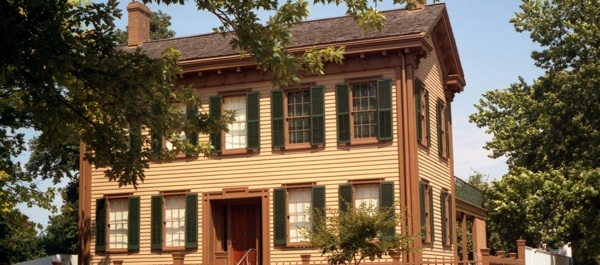
Lincoln Home National Historic Site includes the largest neighborhood of original historic homes in any United States park.
The Bicentennial of Abraham Lincoln’s birth is heightening worldwide interest in the life of the 16th American president. However fascination with the leader who led the country during its deepest crisis has been ongoing for the more than 150 years since he came to public prominence. It is said only Jesus Christ has had more written about him. Scholars, collectors, educators, students and others interested in his life have examined the lore, legend and truth in many forms. Museums and historic sites associated with Lincoln have received many millions of visitors during their existence.
Four Lincoln museums, each different in character, are examined here in detail. While collectively they present a significant portion of the artifacts and literature associated with this great leader there is far too much Lincoln history available to include in one survey. Some resources are presented at the end of this article. These four facilities are principally dedicated to his life and leadership, and each and every one provides a unique glimpse into the man, his life, what he accomplished and stood for.
Abraham Lincoln Presidential Library and Museum
Springfield, Illinois was Lincoln’s home for many years and is his final resting place. Here he married, fathered his children and rose to professional and political prominence. He left Springfield in 1861 to take his place as president, never to return during his tragically shortened life. Much of the Illinois state capital is dedicated to Lincoln; many places associated with him still exist and two of the museums reviewed are here. For a total immersion in Lincoln’s life, a visit to the Abraham Lincoln Presidential Library and Museum is a good first stop.
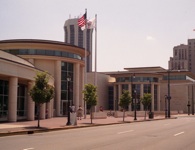 This museum opened in 2005 and the library in 2003 under the auspices of the State of Illinois. The library is a well-known resource for Lincoln study. It is both larger in size and different in scope from the libraries of recent presidents. Besides the research library, the facility includes the museum, sculpture gardens and a visitor center in a restored late 19th century train station. Accessibility might be a single word descriptive of the museum’s aim to introduce people of all ages and levels of understanding to the life of Lincoln. Museum leaders take pride in the theme park theatrics used in the presentation of most of the displays.
This museum opened in 2005 and the library in 2003 under the auspices of the State of Illinois. The library is a well-known resource for Lincoln study. It is both larger in size and different in scope from the libraries of recent presidents. Besides the research library, the facility includes the museum, sculpture gardens and a visitor center in a restored late 19th century train station. Accessibility might be a single word descriptive of the museum’s aim to introduce people of all ages and levels of understanding to the life of Lincoln. Museum leaders take pride in the theme park theatrics used in the presentation of most of the displays.
Exhibit halls branch out from a large central rotunda, the Plaza. Upon entering this area, the first impressions are of a life size log cabin and a slightly less than life size South Portico of the White House, the Executive Mansion in 1860. These provide entrances to the two Journey exhibits which span Lincoln’s life. There are also life size wax figures of Abraham and Mary Lincoln and three of their sons, Robert, William and Thomas “Tad” (no photos are known to exist of Eddy, the child who died in 1852). They are out in the open for size comparison and picture taking. Many static figures appear throughout the life-size dioramas of the Journey exhibits.
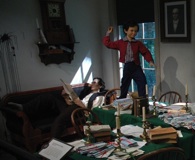 The first Journey takes visitors through Lincoln’s pre-Presidential life. Full-size dioramas include a New Orleans slave auction, New Salem store, a Lincoln-Douglas debate and a room in the Lincoln-Herndon law office, among others. Visitors are guided through important aspects of Lincoln’s early life with reproduced and a few original artifacts, oversized documents, wall panels and the dioramas to illustrate events and characterizations. Toward the end visitors are introduced to television coverage of the 1860 Presidential campaign in a news control room set with the events reported by the late Tim Russert, to whom this exhibit is now dedicated.
The first Journey takes visitors through Lincoln’s pre-Presidential life. Full-size dioramas include a New Orleans slave auction, New Salem store, a Lincoln-Douglas debate and a room in the Lincoln-Herndon law office, among others. Visitors are guided through important aspects of Lincoln’s early life with reproduced and a few original artifacts, oversized documents, wall panels and the dioramas to illustrate events and characterizations. Toward the end visitors are introduced to television coverage of the 1860 Presidential campaign in a news control room set with the events reported by the late Tim Russert, to whom this exhibit is now dedicated.
While this Journey exhibit suite does a credible job of detailing in timeline fashion the factors and events shaping Lincoln’s life before the presidency, the second Journey into the White House is less effective. An unlikely pairing of life-size wax figures, generals McClellan and Grant standing together on the portico, with a leering John Wilkes Booth standing on the lawn nearby, is indicative of the incomplete and disjointed presentation of this period. More attention is paid to Lincoln’s family life while at the Executive Mansion – a dress display of Mary Todd Lincoln and her Washington women rivals, a poignant scene of the Lincolns in despair in the bedroom of gravely ill Willie – and less to his role as the main political figure of the time and commander-in-chief of the U. S. military.
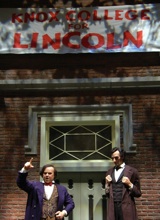 Full use of multi-media techniques is in evidence here. Whispered voices in a hall full of political cartoons recite detractions of Lincoln’s leadership. Other comments are whispered as one enters the room built to represent the Executive Mansion kitchen. Holographic images in a later galley shout criticisms of the Emancipation Proclamation. The impact of these audio montages seems to be decidedly negative in questioning Lincoln’s judgment. A full-scale diorama based on Francis Carpenter’s painting of the First Reading of the Emancipation Proclamation is impressive, as are the group of original oils and artifacts in the God Grant Victory gallery and the display of Lincoln’s casket lying in state in the Illinois Capitol. However, most of the Civil War themed displays, including the “Civil War in 4 Minutes” with its “odometer of death” are much less impressive.
Full use of multi-media techniques is in evidence here. Whispered voices in a hall full of political cartoons recite detractions of Lincoln’s leadership. Other comments are whispered as one enters the room built to represent the Executive Mansion kitchen. Holographic images in a later galley shout criticisms of the Emancipation Proclamation. The impact of these audio montages seems to be decidedly negative in questioning Lincoln’s judgment. A full-scale diorama based on Francis Carpenter’s painting of the First Reading of the Emancipation Proclamation is impressive, as are the group of original oils and artifacts in the God Grant Victory gallery and the display of Lincoln’s casket lying in state in the Illinois Capitol. However, most of the Civil War themed displays, including the “Civil War in 4 Minutes” with its “odometer of death” are much less impressive.
The other main exhibit halls feature a multi-screen presentation of Lincoln’s life, “Lincoln’s Eyes,” an interactive display “Ask Mr. Lincoln” and “Ghosts of the Museum,” illustrating in dramatic fashion the importance of historic study. The Treasures Gallery features artifacts from the library’s hefty collection including a copy of The Gettysburg Address in Lincoln’s hand. Currently on exhibit in the Illinois Gallery is “The Agricultural Vision of Abraham Lincoln.” Mrs. Lincoln’s Attic features hands-on period costumes and toys and is designed for kids, although at least one adult couldn’t resist constructing something from a table full of Lincoln Logs.
Back to accessibility; this museum does open the complex book of Lincoln’s life to a wide-ranging audience. A testament to this is the number of foreign visitors observed on a summer visit to the facility. It succeeds in capturing the intellect and emotions of the man, the melancholy of his family tragedies, the strain of leadership on his countenance. As previously mentioned, his leadership in military and political affairs during his presidency is underserved, and serious scholars will want to spend much more time at the library across the street. But the museum here serves as an important beacon for guiding the Lincoln legacy through present and future generations.
Lincoln Home National Historic Site
A short distance south along the historic streets of the Illinois capital is the Lincoln Home National Historic Site. The neighborhood character is immediately evident as the streets surrounding Eighth and Jackson are closed to modern traffic and retain a 1860s appearance. In fact, it is the largest neighborhood of original historic homes in any United States park. Anyone wishing to tour the interior of the Lincoln home must first stop at the visitor center to obtain a free tour ticket. As Robert Lincoln specified in his donation of the house to public trust, no fee must ever be charged to anyone wishing to see the house.
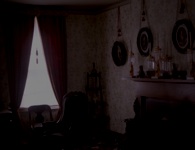 Among the many historical areas of Springfield which feature ties to Lincoln, this is the most important. The Greek Revival cottage on Eight Street, purchased in 1844 for $1500, was the only home the Lincolns owned. The family occupied the house for 17 years and made quite a few improvements, including a major addition of a full second story in 1856. The silent beauty of the restored house, with original and reproduction furnishings, is quite a different experience from the sensory absorbing exhibits of the museum previously described.
Among the many historical areas of Springfield which feature ties to Lincoln, this is the most important. The Greek Revival cottage on Eight Street, purchased in 1844 for $1500, was the only home the Lincolns owned. The family occupied the house for 17 years and made quite a few improvements, including a major addition of a full second story in 1856. The silent beauty of the restored house, with original and reproduction furnishings, is quite a different experience from the sensory absorbing exhibits of the museum previously described.
The visitor center has a diorama of Springfield in the 1860s and a film that traces Lincoln’s life in Springfield, “Abraham Lincoln: A Journey to Greatness.” Interpretive rangers lead guided tours of the house. Among the original furnishings are black, horse-hair upholstered furniture in the front parlor and the desk in Lincoln’s bedroom. Other furniture and décor were carefully researched to reproduce the home’s period look. The work has paid off as the impression seems complete except for the absence of the famous residents. A popular guide story is told as visitors climb the front stairs to the second story. Touching the original handrail is “almost like shaking hands with Mr. Lincoln.”
The neighboring homes are in various stages of restoration. The first floor of the Mary Dean house across Eight Street has exhibits about the Lincolns in Springfield. There are artifacts here from a significant archeological dig in the yard of the Lincoln home conducted in 1952. It is appropriate that conservationists and the Park Service chose to retain and restore not only the house, but the surrounding community. The Lincolns had close relations with their Springfield neighbors and Springfield felt an enormous sense of loss upon the death of their favorite son.
Abraham Lincoln Library and Museum at Lincoln Memorial University
A completely different perspective on Lincoln is available at the Abraham Lincoln Library and Museum at Lincoln Memorial University, Harrogate, Tennessee, nestled in the beautiful rural setting of the Cumberland Gap. The university was founded in 1897 on Lincoln’s suggestion to former Army of the Potomac general Oliver Otis Howard to help the loyal people of East Tennessee, an area of the South where many residents wanted to remain in the Union. The museum itself was established in 1977 with a matching grant from university trustee and Lincoln enthusiast Col. Harlan Sanders, founder of Kentucky Fried Chicken. It is geographically the southernmost library/museum dedicated to the study of Lincoln.
.jpg) This collection of more than 30,000 items (much of it printed matter) was begun with the school’s inception and first managed by R. Gerald McMurtry, Lincoln scholar and former LMU professor. Other items and collections, including McMurtry’s, were added over the years. USS Monitor skipper John L. Worden’s collection of objects and writings is a prized acquisition and new items arrive frequently. Because the museum is in an academic setting – liberal arts students at LMU are required to take two courses on Abraham Lincoln using museum facilities and staff – the exhibits are traditional; the emphasis is on artifacts, rather than design. Special programs, educational conferences and a Lincoln publication highlight the outreach agenda.
This collection of more than 30,000 items (much of it printed matter) was begun with the school’s inception and first managed by R. Gerald McMurtry, Lincoln scholar and former LMU professor. Other items and collections, including McMurtry’s, were added over the years. USS Monitor skipper John L. Worden’s collection of objects and writings is a prized acquisition and new items arrive frequently. Because the museum is in an academic setting – liberal arts students at LMU are required to take two courses on Abraham Lincoln using museum facilities and staff – the exhibits are traditional; the emphasis is on artifacts, rather than design. Special programs, educational conferences and a Lincoln publication highlight the outreach agenda.
The museum building is a two-story structure at the entrance to the campus. Exhibits are on the first floor though the ceiling is high, allowing for the display of many large original oils of Lincoln and other period figures – one of the collection’s strengths. Also prominent are miniature and oversized carved marble and bronze statues of the president. A mezzanine is dedicated to transitional exhibits. In October, “Lincoln and the Presidency” opens—an intriguing presentation of how Lincoln’s conduct of the office was influenced by those who came before him, and how his presidency shaped men who have held the office since. The museum places emphasis on tracing Lincoln’s family, who passed through the nearby Cumberland Gap on their way to the frontier. A fine example of Thomas Lincoln’s carpentry handiwork is a large inlaid cabinet on display. Lincoln’s father fostered the skills, but not the desire, for hard work in his son this exhibit tells us.
The museum also features a series of miniature dioramas of major events in Lincoln’s political career, as well as exhibits on his role as commander-in-chief and his assassination. Other items of interest, not in any particular order, include a prized walking stick, an 1858 senatorial campaign flag, china from the Lincoln White House and Springfield home, a carriage that belonged to his secretary of state William Seward and a Civil War ambulance – all original. Though this museum lacks the panache of the presidential library or the walk-through history of the Lincoln Home, it does have a quiet scholarly charm in an idyllic setting. Additional major acquisitions and improved exhibits are forthcoming and the senior staff will enthusiastically provide personalized guided tours when called upon because they think that much of their museum.
Ford’s Theatre National Historic Site
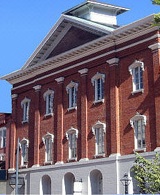 Ford’s Theatre National Historic Site in Washington, D.C., is in the midst of an ambitious renovation. Like the Lincoln Home, its strength is in the history of its buildings but the focus, which has been on the assassination and death of the president, is being expanded. The position of Ford’s Theatre in the annals of history is unique. Not only is it the site of the first successful assassination of a U. S. President, it is the place where the vision of one man who saw the promise of American democracy like no other was extinguished. Whether his legacy became even greater once he was martyred here by John Wilkes Booth’s bullet will never be known. But the might of his influence in death began here. The expanded focus includes attention to examining this question along with many others about Lincoln’s life and impact.
Ford’s Theatre National Historic Site in Washington, D.C., is in the midst of an ambitious renovation. Like the Lincoln Home, its strength is in the history of its buildings but the focus, which has been on the assassination and death of the president, is being expanded. The position of Ford’s Theatre in the annals of history is unique. Not only is it the site of the first successful assassination of a U. S. President, it is the place where the vision of one man who saw the promise of American democracy like no other was extinguished. Whether his legacy became even greater once he was martyred here by John Wilkes Booth’s bullet will never be known. But the might of his influence in death began here. The expanded focus includes attention to examining this question along with many others about Lincoln’s life and impact.
Reopening in February 2009, Ford’s Theatre has been upgraded in its capacity as a working theater, and in visitor amenities. However the Presidential box will remain as before, outfitted as it was on April 14, 1865 and capturing that moment frozen in time as a fitting shrine. The museum in the theater basement will reopen on July 15 with familiar items such as Lincoln’s rocker and shawl, Booth’s diary and the derringer that fired the fatal shot. New exhibits will also tell about Lincoln’s time in Washington, including a recreation of his Executive Mansion office. The Petersen House across 10th Street from the theater, where Lincoln was carried after being mortally wounded and where he died, will still evoke emotional connections to that sad time. It is open now but will undergo refurbishing shortly. The small rooms, period décor and bed where Lincoln died impress the events of that night, and the memory of the saddened faces of officials, friends and Mrs. Lincoln. Ford’s Theatre and the Petersen House stand as silent sentinels to the history that unfolded there. The additions here can only enhance their roles as way stations in the life of American’s greatest leader.
OTHER PLACES TO GET IN TOUCH WITH LINCOLN
Springfield, IL
Lincoln Tomb State Historic Site, Oak Ridge Cemetery
Lincoln Herndon Law Office
Old State Capitol
Lincoln (Great Western Railroad) Depot
State of Illinois
Lincoln’s New Salem State Historic Site
Old Main at Knox College, Galesburg, IL
Lincoln Douglas Debate Museum, Charleston, IL
Lincoln College Museum, Lincoln, IL
Chicago Historical Society
Vandalia State House State Historic Site, Vandalia, IL
Lincoln Trail Homestead State Park, Decatur, IL
Midwest
Lincoln Birthplace NHS, KY
Lincoln Boyhood Home, IN
Washington, D. C.
Lincoln Memorial
Smithsonian Museum
President’s Park (White House)
President Lincoln’s Cottage at the Soldiers’ Home
Library of Congress – Lincoln Papers
East
Gettysburg NMP
David Wills House, Gettysburg, PA




